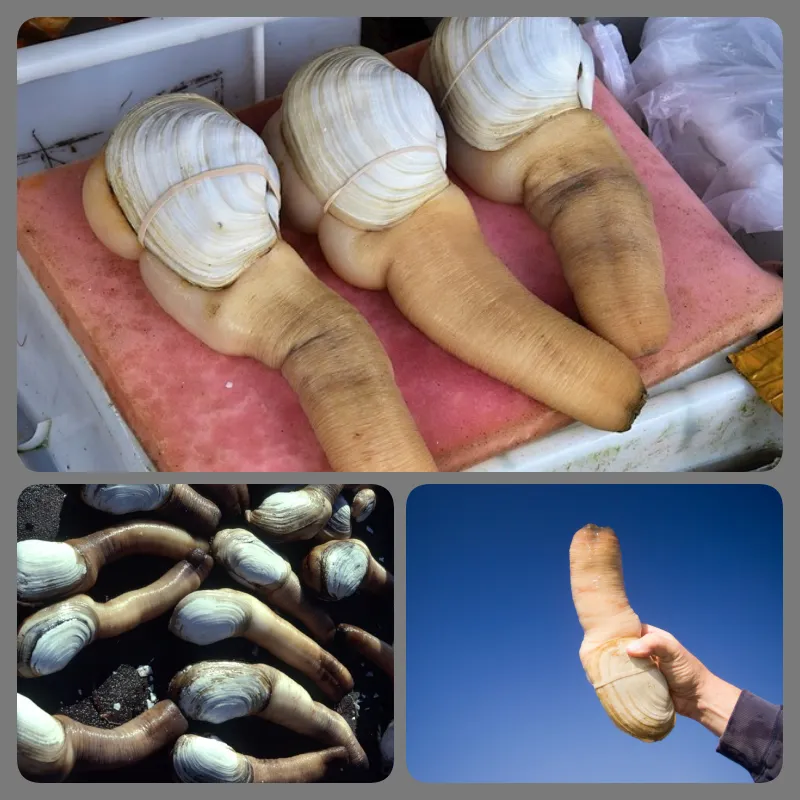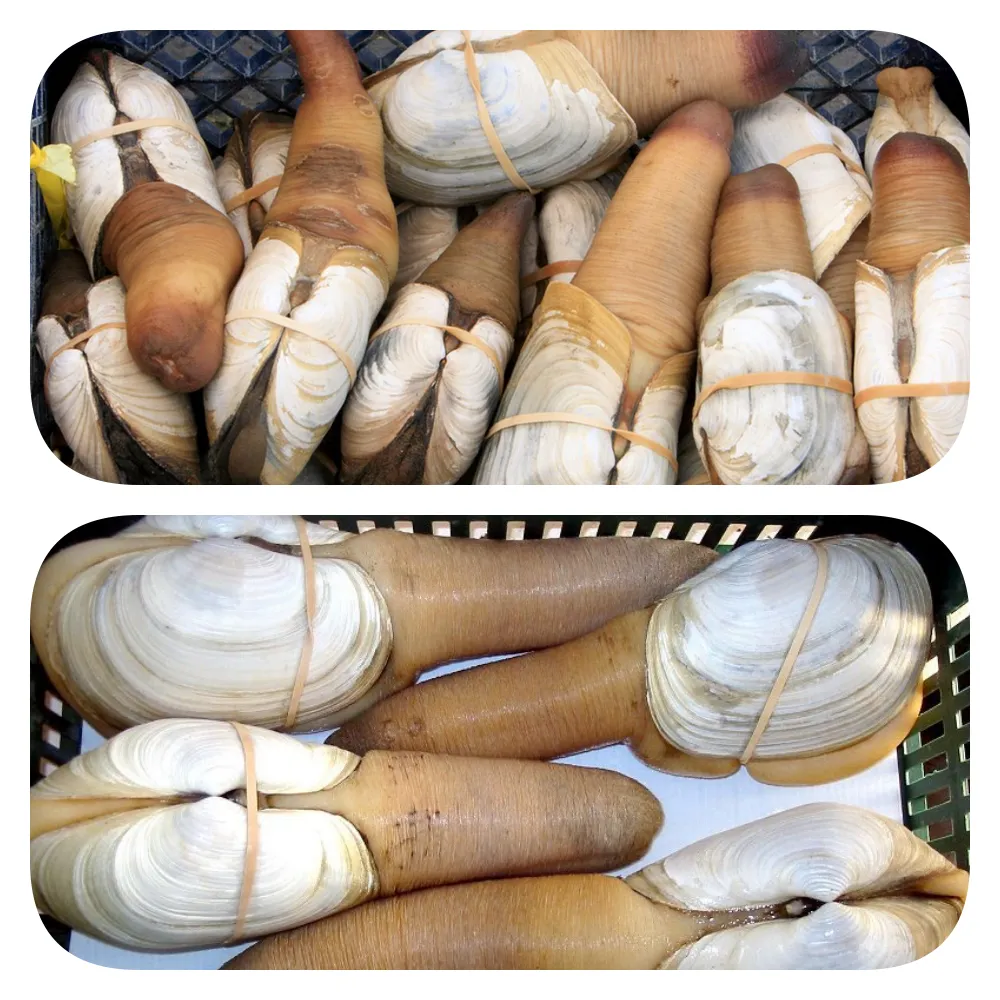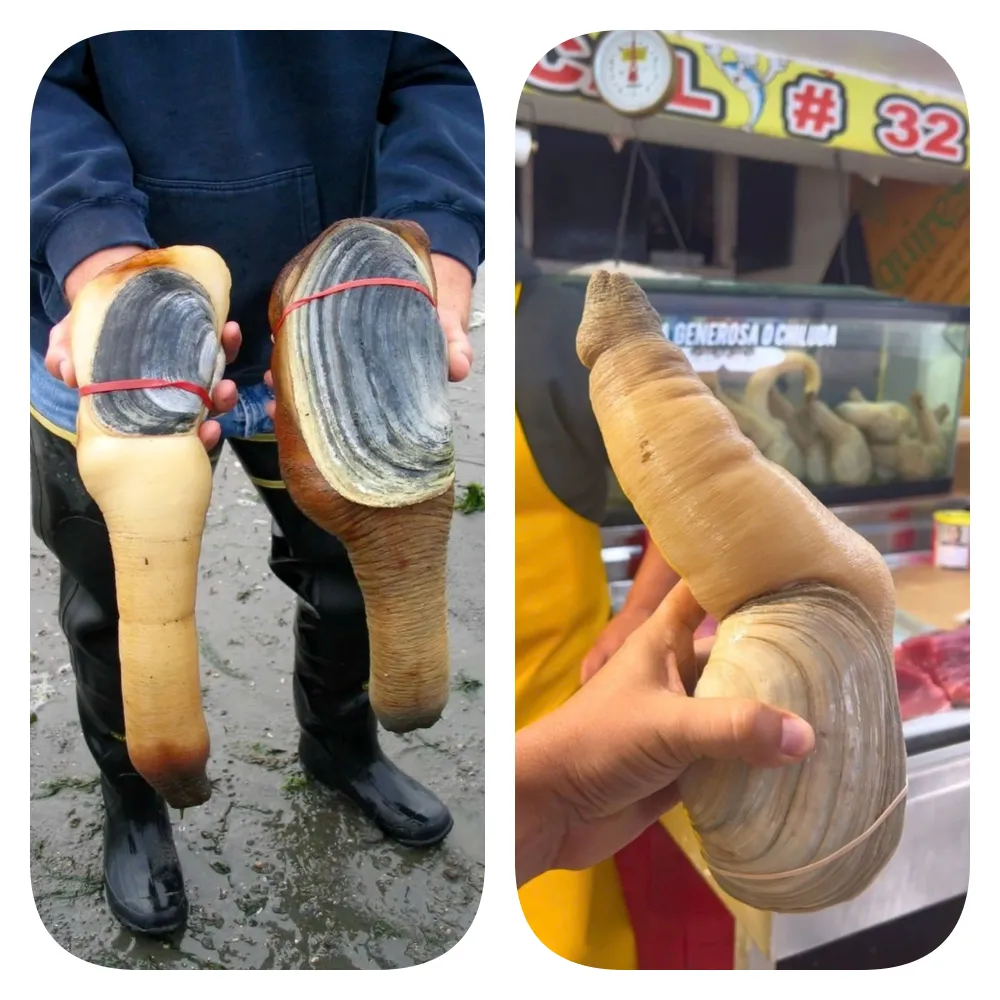
Giant Geoduck Clams: A Remarkable Seafood Delicacy
The giant geoduck clam, known for its impressive longevity of over 165 years, is a marvel of marine life. Native to the Pacific Ocean, these clams can weigh up to 4 kg, with shells typically measuring 15 to 20 cm in length and siphons extending up to 1 meter. The scientific name for this species is Panopea generosa, and they are commonly found along the Pacific coast of North America, from Alaska to Baja California, Mexico.

Geoducks are filter feeders, subsisting on plankton, crustaceans, and fish larvae found in clean, coastal waters. Their elongated siphon is a distinctive feature, often considered a delicacy in various culinary traditions.
The name “geoduck” derives from the Nisqually Native American word “gweduc,” meaning “to dig deep.” As the largest burrowing bivalve, geoducks inhabit depths of about 1 meter below the ocean floor.
As a bivalve mollusk, the Pacific geoduck’s body is enclosed within a two-part shell. It uses its muscular foot to dig into sediment and anchor itself securely. Geoducks feed by drawing in seawater, filtering out plankton and nutrients, and expelling the excess through their siphon. The siphon features two openings: one for intake of oxygen and plankton, and another for expelling waste water.
Despite their shells usually being 15 to 20 cm long, geoduck siphons can extend up to 1 meter. In their first 3 to 5 years, they can grow to approximately 0.7 kg. On average, adults weigh around 1.1 kg, but can reach up to 4 kg.

Geoducks exhibit sexual dimorphism, reaching sexual maturity around 3 years of age. Males can reproduce for over 100 years, while females possess large ovaries containing millions of eggs, with each spawning producing 1 to 2 million eggs.
Unlike other bivalve mollusks that move to evade predators, geoducks retract their siphons as a defense mechanism. They are preyed upon by crabs, sharks, sea otters, and starfish.
Geoducks are prized as a delicacy around the world, enjoyed either cooked or raw as sushi or sashimi. They are harvested both from the wild and through aquaculture, particularly in Washington State, USA. While some believe that their unique appearance may have aphrodisiac qualities, there is no scientific evidence to support this claim.






